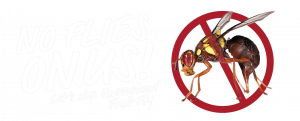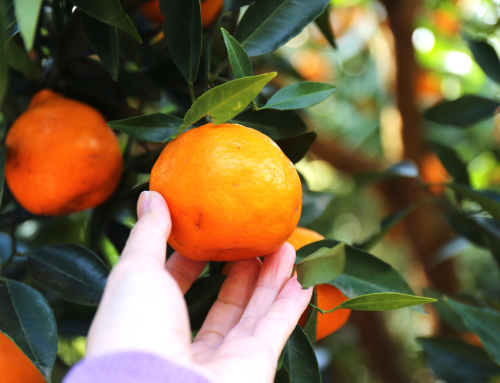Orchard hygiene and pre-spring activity
It is recommended commercial growers initiate a crop checking schedule in August in preparation for increased fruit fly activity in the lead up to spring. Regular inspections should be undertaken and should include monitoring in and around the orchard, home garden, feral fruit on creek banks and roadsides, along with nearby abandoned orchards for fruit that may act as hosts for the coming season’s fruit fly populations.
It is important to be on the look-out for black marks and soft spots on early ripening fruit indicating fruit fly stings.
Take action to stop the spread
Fruit fly traps are an ideal method to determine whether fruit fly is present in your orchard or property. It is recommended that traps be deployed all year round. Traps should be repositioned and moved out of deciduous orchards over winter to areas where there are evergreen plants instead as this is where fruit flies seek refuge overwinter in order to escape and survive the cold. It is highly advisable to place female-biased traps in evergreen plants such as lemon trees situated near the house, packing shed or other relatively warm positions.
Fruit fly baits are the best method for controlling fruit flies before their populations get too big to handle. If you detect fruit fly in traps or find infested fruit in or near your crop, bait applications should commence as per the label instructions.
It is important to ensure you have fruit fly monitoring and control material for immediate use, should it be required.
The impact of weather and fruit fly
Weather forecasts indicate it is likely there will be more rainfall than usual expected during August across the Goulburn Murray Valley. Increased winter rainfall is likely to lead to higher than normal minimum temperatures which encourage fruit fly survival and may promote the early set of fruit which could become an early target for fruit fly. This could increase the numbers of fruit fly produced in the first generation of spring. Vigilance at this time of year is important to reduce the impact of fruit fly on the coming season.
Extra vigilance required in hot spot areas
Hot spot risk areas for August include:
- Orrvale
- Shepparton East
- Shepparton Urban
- Tatura Rural
- Toolamba




